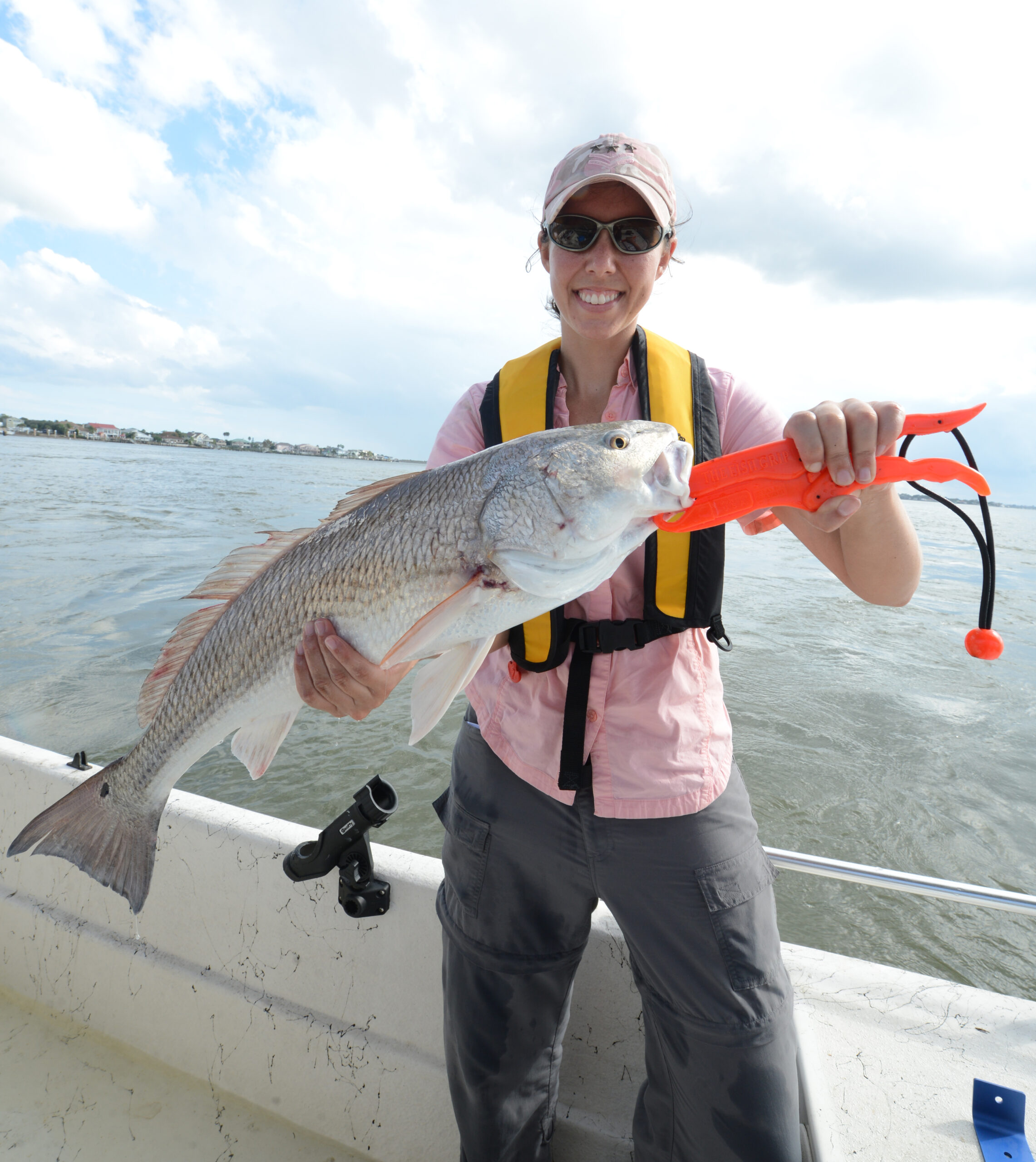What Happens to Red Drum and Spotted Seatrout After Live Weigh-Ins at Tournaments?

Red drum are slower to leave the area after release, and fewer die after tournaments than spotted sea trout.
Research Need
Catch-and-release fishing is an ideal way to enjoy the sport while reducing pressure on popular fish stocks. Red drum and spotted sea trout are two of the most popular fish among saltwater anglers — and they’re also the focus of many saltwater fishing tournaments.
Some tournaments have adopted the live weigh-in format, where anglers must bring in fish alive. After anglers catch fish, they transport them to the tournament headquarters, where officials measure and weigh the catch, ultimately to release the fish back into the surrounding waters to be caught another day.
We know that a large percentage of red drum and spotted sea trout survive catch and release during recreational fishing — but what about survival after the tournament weigh-in process? If they do survive, how long do they hang around the tournament site, and then where do they go?
What did they study?
Scientists worked with fishers and organizers of the 2016, 2017, and 2018 Alabama Deep Sea Fishing Rodeo to track the survival rates and movements of live red drum and spotted sea trout after live weigh-ins. They documented the condition of the fish and where anglers caught them (when known), as well as length and weight. Scientists also implanted both an electronic acoustic tag and used an external streamer tag to aid in following the fate and location of each fish after release.
What did they find?
The combination of tags allowed the research team to build a computer model to determine whether fish lived or died within a 3-day window after the tournament weigh-in, and the researchers even could identify the fishes’ location long after the tournament ended.
Estimates of the survival rates of both species fell within the documented range of recreational catch-and-release rates. Specifically, 6.1% of red drum died after weigh-ins, much lower than 30.6% of spotted seatrout that died.
Neither red drum nor spotted seatrout lingered in large numbers at the weigh-in site after release. Most spotted seatrout dispersed from the area within 2 weeks, but red drum took almost 5 weeks to disperse similarly. By the end of the 8-week sampling period, almost all fish had relocated from the weigh-in site.
Anything Else?
Although researchers didn’t account for summertime water temperatures in their model, warmer waters could have negatively impacted the survival of both species.
Increasing angler education on proper live-well practices could further increase fish survival, especially in the summer.
So What?
Based on the data obtained in this study, the research team suggests that red drum and spotted seatrout tournament organizers should consider moving to live-release events only and hold them outside of summer conditions whenever practical.
Reading
Reid Nelson, Crystal L. Hightower, and Sean P. Powers. 2021. Red Drum and Spotted Seatrout Live-Release Tournament Mortality and Dispersal. Marine and Coastal Fisheries: Dynamics, Management, and Ecosystem Science 13:320–331. DOI: 10.1002/mcf2.10159.
Funding for this work was provided by the National Fish and Wildlife Foundation, Gulf Environment Benefit Fund via a subcontract from the Alabama Department of Conservation and Natural Resources.
Summary compiled by Scott Baker.
Lead photo by Florida Fish and Wildlife via CC BY-ND 2.0. CreativeCommons.org.
The text from Hook, Line & Science is available to reprint and republish at no cost, but only in its entirety and with this attribution: Hook, Line & Science, courtesy of Scott Baker and Sara Mirabilio, North Carolina Sea Grant.
- Categories:



